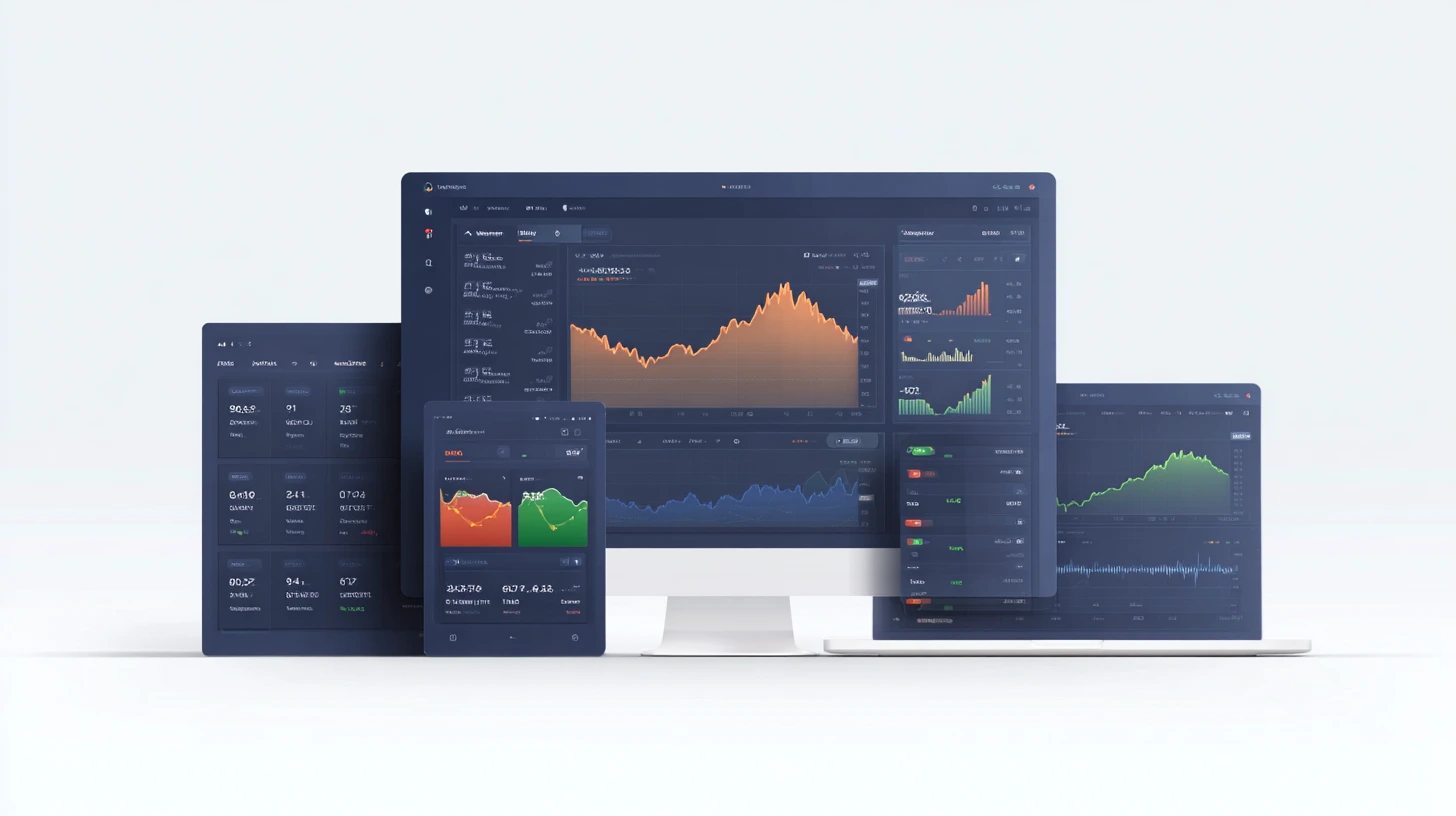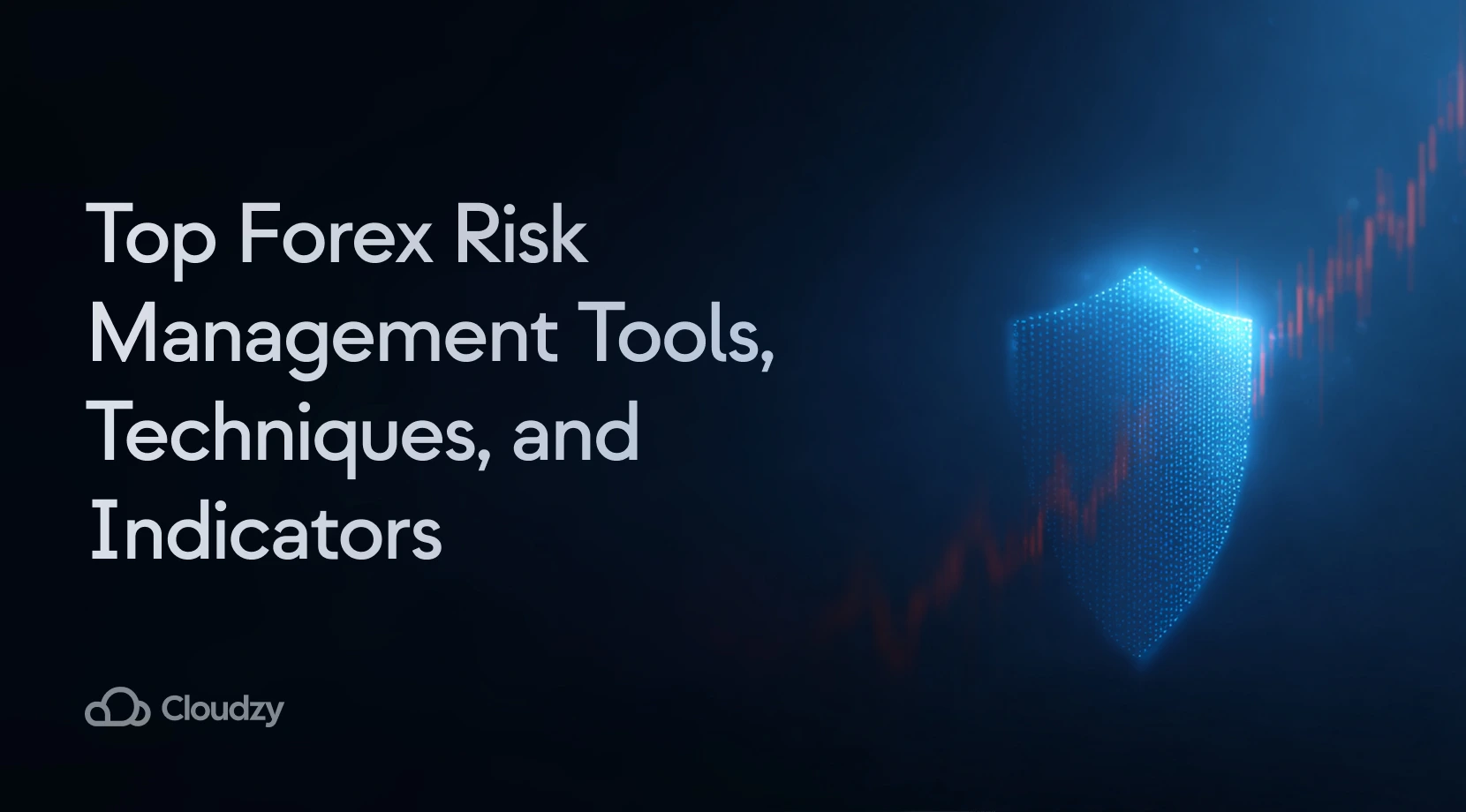The most essential forex risk management tools every trader should know in 2025 include automated position sizing calculators, stop-loss order systems, and risk-reward ratio analyzers that work together to protect trading capital. These tools automatically calculate optimal trade sizes, set protective stops, and monitor portfolio exposure in real-time to address the critical fact that 90% to 95% of forex traders lose money due to poor risk management practices. With the forex market generating a staggering $7.51 trillion daily trading volume, proper risk control becomes critical for survival in this massive marketplace.
Here’s the thing: modern forex risk management tools combine MetaTrader’s native capabilities with advanced software solutions to eliminate emotional decision-making and enforce disciplined trading approaches. But finding the right balance between automation and manual control? That’s where most traders struggle.
TL;DR Summary
- Position sizing calculators prevent overleveraging by automatically determining optimal trade sizes based on account balance and risk percentage
- Stop-loss automation tools eliminate emotional decision-making during volatile markets and protect against catastrophic losses
- Risk-reward ratio indicators help maintain profitable strategies long-term, with 40% win rates becoming profitable using proper 1:3 ratios
- MetaTrader’s native tools provide comprehensive risk monitoring without additional software costs
- Advanced automated systems lock in profits while protecting against sudden market reversals
- Risk management indicators and specialized tools help identify optimal entry and exit points for trades
What Are the 5 Essential Risk Management Techniques for Forex Traders?

Professional forex traders rely on systematic risk management techniques rather than intuition alone. These five core methods form the foundation of every successful trading strategy, regardless of market conditions or experience level. But here’s what most courses won’t tell you: even seasoned traders break these rules sometimes. The key is knowing when.
Focus on protecting the money you need
Capital preservation requires trading only with disposable income that your livelihood doesn’t depend on. The 25% Rule provides a practical framework: allocate 25% for new trades, 25% for trade management, and keep 50% untouched. For example, with a $20,000 account, this means $5,000 for new positions, $5,000 for adjustments, and $10,000 in reserve.
This approach becomes critical when considering that losing 50% of your capital requires a 100% return just to break even. Think about it—if you lose half your account, you need to double what’s left just to get back to square one.
Why Should You Set Stop-Losses on Every Trade?
Stop-loss orders act as automatic safety triggers, becoming market orders when price levels are breached. Place these protective orders on every single trade regardless of confidence level. Yes, even on those “sure thing” setups that feel bulletproof.
Use support and resistance levels from technical analysis for optimal placement. During volatile periods, remember that stop-losses don’t guarantee exact fill prices due to slippage—another reason why proper placement matters more than you’d think.
Adjust your Risk Reward Ratio (RRR)
Maintain a minimum 1:2 risk-reward ratio, meaning you risk $1 to potentially gain $2. Professional traders often target 3:1 ratios to account for inevitable losing streaks. The calculation examines your entry point, stop-loss, and take-profit orders to determine their differences.
For beginners, starting with 1:2 ratios provides a foundation for sustainable profitability while learning market dynamics. Though honestly? Some of the best scalping strategies work with tighter ratios—context matters more than rigid rules.
Manage and adjust your trading capital per trade
Never risk more than 1-2% of total capital per trade. Many experienced traders limit themselves to 1% maximum. Use the formula: Position size = Risk per trade ÷ Risk per share.
For example, with a $50,000 portfolio risking 1% ($500) on EUR/USD at 1.2000 with a stop-loss at 1.1950, your position size equals $500 ÷ 0.0050 = 100,000 units or one standard lot. Simple math that could save your trading career.
Identify your risk factors
Risk assessment encompasses age, experience level, available capital, market knowledge, prediction ability, and time availability for monitoring trades. Successful traders understand their psychological capacity for losses and adjust strategies accordingly through proper risk assessment trading methodologies.
Consider implementing reliable trading forex VPS solutions to ensure consistent execution and reduce technical risks that could impact your carefully planned trades. Because the last thing you want is your internet cutting out during a crucial trade.
What Do You Need to Know About Forex Trading Risk Management Systems?

Understanding the mechanics behind forex risk management tools requires familiarity with key trading concepts. These fundamental elements determine how risk is calculated and controlled in every trade.
How Do You Calculate Position Size?
Lot size classifications directly impact your position sizing calculations:
- Nano lot = 100 units of currency
- Micro lot = 1,000 units of currency
- Mini lot = 10,000 units of currency
- Standard lot = 100,000 units of currency
Use the formula: Position size = Risk per trade ÷ Risk per share. For a $5,000 account risking 2% ($100) on GBP/USD with a 20-pip stop-loss where each pip equals $1, your position size would be $100 ÷ $20 = 5 micro lots. Using a forex position sizing calculator can streamline these calculations and prevent costly errors.
What Is Pip Value and How Does It Affect Risk?
Pip stands for “Price Interest Point” and represents the fourth decimal place in most currency pairs. Pip value changes based on currency pairs and lot sizes, requiring calculation using current market values. For optimal trade execution, keep pip risk under 10 pips. For example, entering GBP/USD at 1.2650 with a stop-loss at 1.2630 creates 20 pips of risk, which exceeds the recommended threshold.
How Do You Set Your Account Risk Limit Based on Forex Position Size?
Calculate your account risk using this formula: (Risk amount ÷ Account balance) × 100 = Risk percentage. With an $80,000 account risking $800 per trade, your risk limit equals 1%. Experienced traders avoid increasing risk percentages on seemingly “sure” trades, maintaining consistent risk levels regardless of confidence in individual setups.
Adjust your pip risk
Pip risk stems from the relationship between your entry point and stop-loss level. Maintaining pip risk under 10 pips prevents missing profitable trades due to premature stop-outs. Market volatility should influence your pip risk adjustments, with tighter stops during uncertain periods and slightly wider stops during normal market conditions.
How Do You Get the Most Out of MetaTrader Risk Management System?

MetaTrader platforms offer built-in risk management capabilities that many traders overlook. Maximizing these native tools eliminates the need for expensive third-party software while providing professional-grade risk control. But here’s the million-dollar question: should you automate everything or keep some manual control?
These MT4 risk management tools and MetaTrader risk management solution features work seamlessly with forex risk management software to create comprehensive trading capital allocation strategies. Every MT4 risk management tool and MT4 risk management solution provides essential foundation for systematic trading approaches.
Avoid Unnecessary Risks
Information-based trading decisions outperform gut instinct approaches in volatile markets. If insufficient data exists to complete an order confidently, skip the trade entirely. MetaTrader’s economic calendar integration helps identify high-risk periods when avoiding trades altogether makes more sense than attempting to profit from unpredictable news events.
Sometimes the best trade is the one you don’t take.
Drawdown Management
Even successful traders experience losing streaks, making drawdown management essential for long-term survival. Use MetaTrader’s trade history to identify patterns in losing sequences and preserve capital during difficult periods.
Focus on determining why losses occurred rather than immediately seeking to recover lost funds through revenge trading strategies that typically compound problems. I’ve seen too many traders blow accounts trying to “get even” after a bad day. Implementing forex trailing stop loss systems and proper forex portfolio diversification can help minimize emotional trading decisions.
Balancing Automation with Manual Control
Here’s where most traders struggle: finding the sweet spot between automated efficiency and manual oversight. Start with automated position sizing and stop-losses, but keep manual control over entry timing and market context decisions.
Automated tools excel at mathematical calculations and emotional discipline. Manual control shines during news events, market shifts, and strategy adjustments. The best traders use both—letting computers handle the math while keeping human judgment for market context.
| Feature | MT4 | MT5 |
| Position Calculator | Basic | Enhanced |
| Trailing Stop Options | Standard | Advanced |
| Risk Visualization | Limited | Comprehensive |
| Multiple Stop Types | Basic | Extended |
Advanced Forex Risk Management Tools and Software Solutions

Beyond MetaTrader’s native capabilities, specialized risk management software offers enhanced features for serious traders. These tools provide automation, advanced analytics, and institutional-grade risk monitoring for those requiring more sophisticated solutions.
Modern forex VPS hosting ensures these automated tools run continuously without interruption, providing the stability required for consistent risk management execution. Advanced forex risk management tools include automated risk calculations that eliminate manual errors, real-time market data integration for immediate decision-making, and predictive analytics using AI algorithms.
Give yourself a better chance at the Forex market by hosting your trading platform right next to your broker. Want to Improve your Trading?
Want to Improve your Trading?
Software categories range from specialized FX risk management platforms to treasury management systems and algorithmic trading platforms with integrated risk controls. These solutions enable backtesting capabilities for strategy validation, position size calculators for time-saving automation, and comprehensive reporting for regulatory compliance and performance analysis. Modern forex volatility management systems also incorporate automated risk tools for better leverage risk control and margin requirement calculation.
Advanced platforms often include currency hedging strategies and comprehensive risk management system in trading frameworks that help institutional traders manage complex portfolios across multiple markets and timeframes.
Conclusion
Successful forex trading depends more on risk management than market prediction ability. That’s a hard pill to swallow for many traders who think they can outsmart the market.
The forex risk management tools and techniques covered—from MetaTrader’s built-in calculators to advanced automated systems—provide the foundation for consistent profitability. Whether calculating position sizes manually or using sophisticated software, systematic application and discipline remain paramount.
Remember that even the best risk management tools cannot eliminate losses entirely. But they transform random gambling into calculated business decisions that protect capital over time. And honestly? That’s the difference between traders who last and those who don’t.




One Response
This page definitely has all the info I wanted about this subject and didn’t know who to ask.